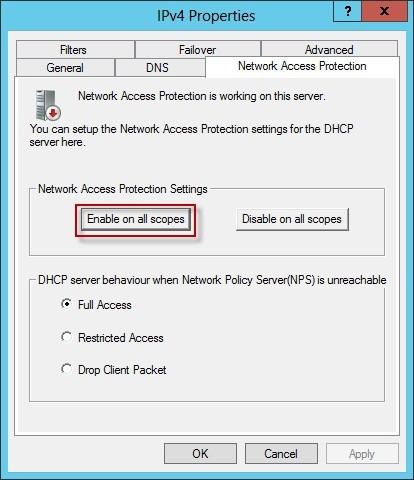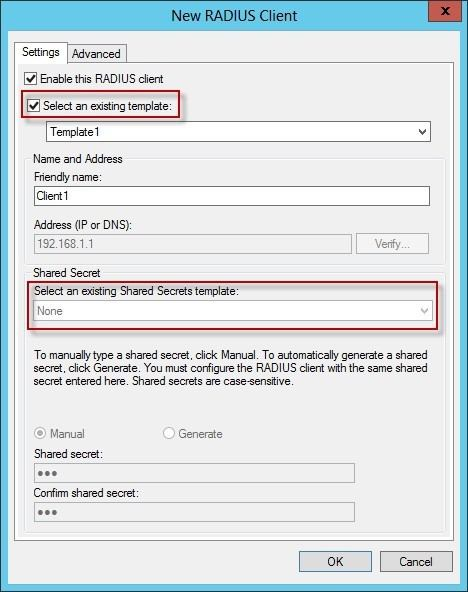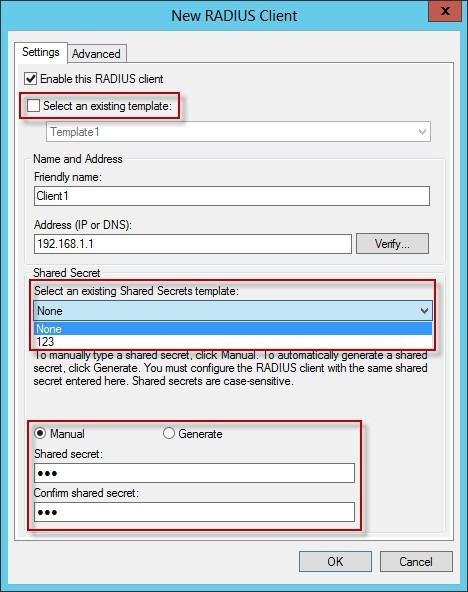Download Microsoft.70-411.Pass4Sure.2019-03-21.184q.tqb
| Vendor: | Microsoft |
| Exam Code: | 70-411 |
| Exam Name: | Administering Windows Server 2012 |
| Date: | Mar 21, 2019 |
| File Size: | 22 MB |
Demo Questions
Question 1
Your network contains an Active Directory domain named contoso.com. The domain contains a server named Server1 that runs Windows Server 2012 R2.
Server1 has the following role services installed:
- DirectAccess and VPN (RRAS)
- Network Policy Server
Remote users have client computers that run either Windows XP, Windows 7, or Windows 8.
You need to ensure that only the client computers that run Windows 7 or Windows 8 can establish VPN connections to Server1.
What should you configure on Server1?
- A condition of a Network Policy Server (NPS) network policy
- A constraint of a Network Policy Server (NPS) network policy
- a condition of a Network Policy Server (NPS) connection request policy
- A vendor-specific RADIUS attribute of a Network Policy Server (NPS) connection request policy
Correct answer: A
Explanation:
If you want to configure the Operating System condition, click Operating System, and then click Add. In Operating System Properties, click Add, and then specify the operating system settings that are required to match the policy. The Operating System condition specifies the operating system (operating system version or service pack number), role (client or server), and architecture (x86, x64, or ia64) required for the computer configuration to match the policy. If you want to configure the Operating System condition, click Operating System, and then click Add. In Operating System Properties, click Add, and then specify the operating system settings that are required to match the policy.
The Operating System condition specifies the operating system (operating system version or service pack number), role (client or server), and architecture (x86, x64, or ia64) required for the computer configuration to match the policy.
Question 2
You are a network administrator of an Active Directory domain named contoso.com.
You have a server named Server1 that runs Windows Server 2012 R2. Server1 has the DHCP Server server role and the Network Policy Server role service installed.
You enable Network Access Protection (NAP) on all of the DHCP scopes on Server1. You need to create a DHCP policy that will apply to all of the NAP non-compliant DHCP clients.
Which criteria should you specify when you create the DHCP policy?
- The client identifier
- The user class
- The vendor class
- The relay agent information
Correct answer: B
Explanation:
To configure a NAP-enabled DHCP server On the DHCP server, click Start, click Run, in Open, type dhcpmgmt. smc, and then press ENTER. In the DHCP console, open <servername>\IPv4. Right-click the name of the DHCP scope that you will use for NAP client computers, and then click Properties. On the Network Access Protection tab, under Network Access Protection Settings, choose Enable for this scope, verify that Use default Network Access Protection profile is selected, and then click OK. In the DHCP console tree, under the DHCP scope that you have selected, right-click Scope Options, and then click Configure Options. On the Advanced tab, verify that Default User Class is selected next to User class. Select the 003 Router check box, and in IP Address, under Data entry, type the IP address for the default gateway used by compliant NAP client computers, and then click Add. Select the 006 DNS Servers check box, and in IP Address, under Data entry, type the IP address for each router to be used by compliant NAP client computers, and then click Add. Select the 015 DNS Domain Name check box, and in String value, under Data entry, type your organization's domain name (for example, woodgrovebank. local), and then click Apply. This domain is a full-access network assigned to compliant NAP clients. 10.On the Advanced tab, next to User class, choose Default Network Access Protection Class. 11.Select the 003 Router check box, and in IP Address, under Data entry, type the IP address for the default gateway used by noncompliant NAP client computers, and then click Add. This can be the same default gateway that is used by compliant NAP clients. 12.Select the 006 DNS Servers check box, and in IP Address, under Data entry, type the IP address for each DNS server to be used by noncompliant NAP client computers, and then click Add. These can be the same DNS servers used by compliant NAP clients. 13.Select the 015 DNS Domain Name check box, and in String value, under Data entry, type a name to identify the restricted domain (for example, restricted. Woodgrovebank. local), and then click OK. This domain is a restricted-access network assigned to noncompliant NAP clients. Click OK to close the Scope Options dialog box. Close the DHCP console. Reference: http: //technet.microsoft.com/en-us/library/dd296905%28v=ws.10%29.aspx 
To configure a NAP-enabled DHCP server
- On the DHCP server, click Start, click Run, in Open, type dhcpmgmt. smc, and then press ENTER.
- In the DHCP console, open <servername>\IPv4.
- Right-click the name of the DHCP scope that you will use for NAP client computers, and then click Properties.
- On the Network Access Protection tab, under Network Access Protection Settings, choose Enable for this scope, verify that Use default Network Access Protection profile is selected, and then click OK.
- In the DHCP console tree, under the DHCP scope that you have selected, right-click Scope Options, and then click Configure Options.
- On the Advanced tab, verify that Default User Class is selected next to User class.
- Select the 003 Router check box, and in IP Address, under Data entry, type the IP address for the default gateway used by compliant NAP client computers, and then click Add.
- Select the 006 DNS Servers check box, and in IP Address, under Data entry, type the IP address for each router to be used by compliant NAP client computers, and then click Add.
- Select the 015 DNS Domain Name check box, and in String value, under Data entry, type your organization's domain name (for example, woodgrovebank. local), and then click Apply. This domain is a full-access network assigned to compliant NAP clients. 10.On the Advanced tab, next to User class, choose Default Network Access Protection Class. 11.Select the 003 Router check box, and in IP Address, under Data entry, type the IP address for the default gateway used by noncompliant NAP client computers, and then click Add. This can be the same default gateway that is used by compliant NAP clients. 12.Select the 006 DNS Servers check box, and in IP Address, under Data entry, type the IP address for each DNS server to be used by noncompliant NAP client computers, and then click Add. These can be the same DNS servers used by compliant NAP clients. 13.Select the 015 DNS Domain Name check box, and in String value, under Data entry, type a name to identify the restricted domain (for example, restricted. Woodgrovebank. local), and then click OK. This domain is a restricted-access network assigned to noncompliant NAP clients.
- Click OK to close the Scope Options dialog box.
- Close the DHCP console.
Reference: http: //technet.microsoft.com/en-us/library/dd296905%28v=ws.10%29.aspx
Question 3
Your network contains an Active Directory domain named contoso.com. The domain contains a server named Server1 that runs Windows Server 2012 R2 and has the Network Policy Server role service installed.
An administrator creates a RADIUS client template named Template1.
You create a RADIUS client named Client1 by using Template 1.
You need to modify the shared secret for Client1.
What should you do first?
- Configure the Advanced settings of Template1.
- Set the Shared secret setting of Template1 to Manual.
- Clear Enable this RADIUS client for Client1.
- Clear Select an existing template for Client1.
Correct answer: D
Explanation:
Clear checkmark for Select an existing template in the new client wizard. In New RADIUS Client, in Shared secret, do one of the following:Bullet Ensure that Manual is selected, and then in Shared secret, type the strong password that is also entered on the RADIUS client. Retype the shared secret in Confirm shared secret. Clear checkmark for Select an existing template in the new client wizard.
In New RADIUS Client, in Shared secret, do one of the following:
Bullet Ensure that Manual is selected, and then in Shared secret, type the strong password that is also entered on the RADIUS client. Retype the shared secret in Confirm shared secret.








